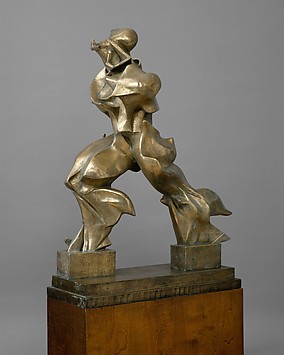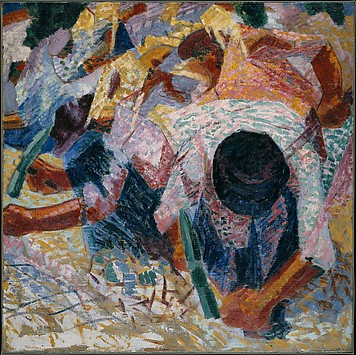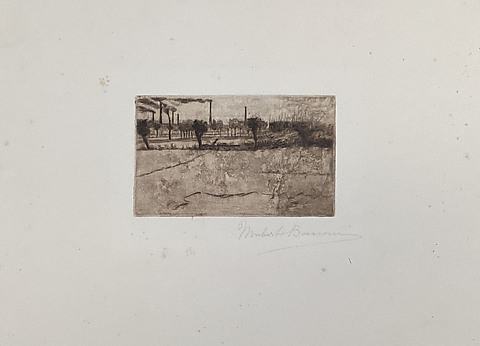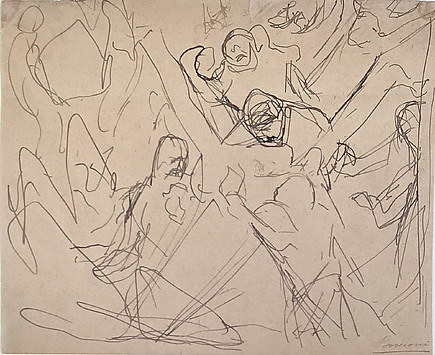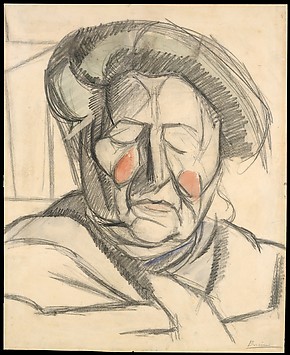Umberto Boccioni (1882–1916) is a model of the spirit and flavor of Futurism—militant, exuberant, actively taking part in the social and political events of the turbulent times in which he lived. His manifestos and his powerfully sensuous visualizations exemplify the nature and the pertinence of the Futurist contribution to modern art. Along with F. T. Marinetti, Giacomo Balla, Carlo Carra, Luigi Russolo, and Gino Severini, Boccioni played a leading role in the development and practice of Futurist ideas and art. During his brief life he made seminal contributions through his writings, paintings, sculptures, drawings, and engravings. Futurism burst forth with impassioned energy in Italy during the years immediately preceding World War I. Rejecting past idealism and scorning contemporary culture and society, the proponents of this major art movement shaped a forceful and revolutionary rhetoric that became the basis for their dynamic art, which conveys the frenetic and colorful motions of urban life. Throughout the course of the twentieth century, Futurism has been largely dismissed in favor of the Cubism concurrently developed in Paris. Yet the Futurist concepts set forth as early as 1910 have been of consequence in many areas of subsequent avant-garde art, both for their championing of the anti-past, pro-technological present and for the resulting art that injects Cubist formal elements with a lively, worldly, urban content. This publication presents an overview of Boccioni's unique accomplishments; it includes both a comprehensive survey of his art and of his writings, a number of which appear here for the first time in English. It documents the first retrospective exhibition of Boccioni's art in the United States. The American audience at last has the opportunity to assess Boccioni's place in the history of twentieth-century art. His fields of whirling action demonstrate that the period standardly termed the Cubist epoch could, with equal justice, be termed the Futurist era, in acknowledgment of the vanguard movement in Italy.








